May 19, 2024

After a quick trip back to the ship for lunch we were off again, this time for a behind-the-scenes visit to the Spanish Riding School of Vienna.
The Spanish Riding School of Vienna has been teaching students and horses the Renaissance tradition of “Haute Ecole” (high school) classical dressage for more than 450 years. We did not get to see a performance, and were not allowed to take pictures of the horses themselves (with one exception), but it was still a memorable experience.
We traveled by bus to the city center, then continued on foot, passing by the Opera House, a statue of the River God, Danubius, and parts of the city wall, before stopping to wait for others to join us under a huge domed archway. Observing how beautifully decorated the interior of the archway was we asked what its history/use was. “Nothing,” was the answer. “This is just the way they did things then (when it was built).” Crazy!
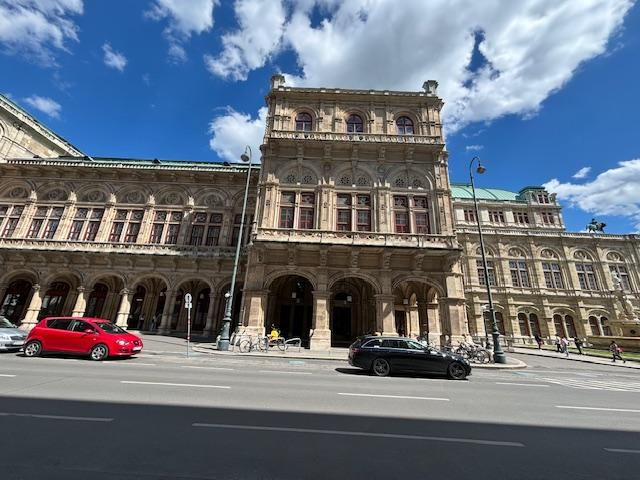
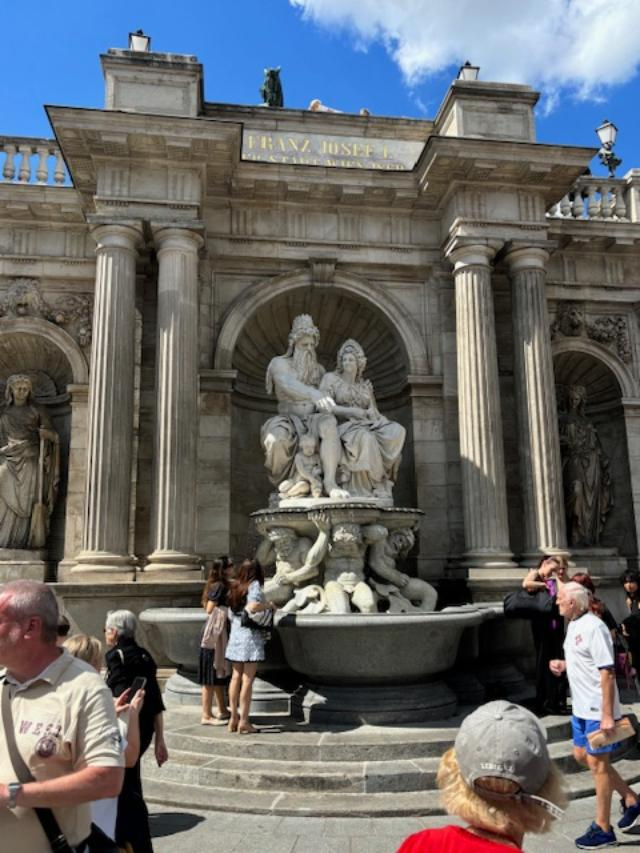
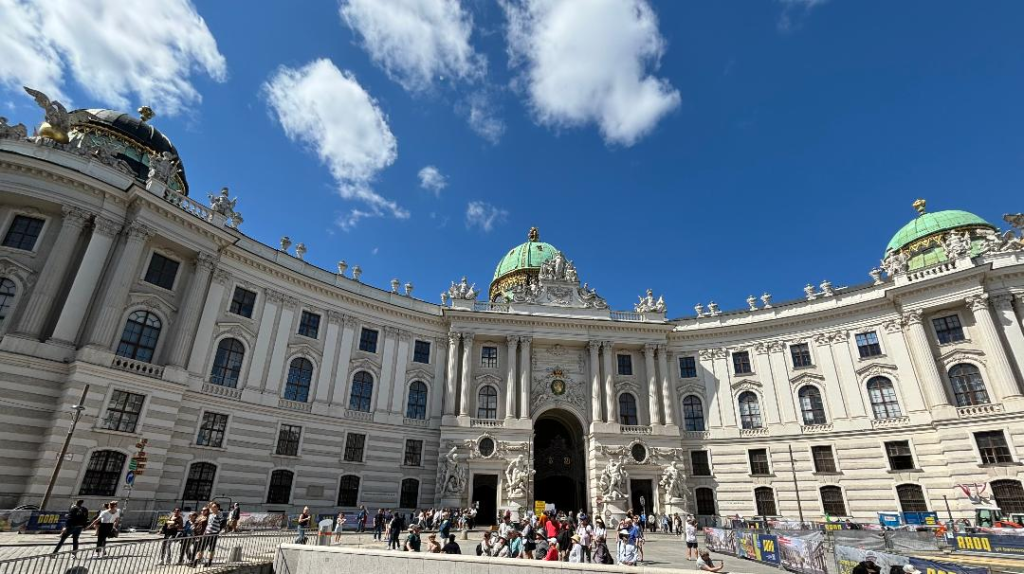
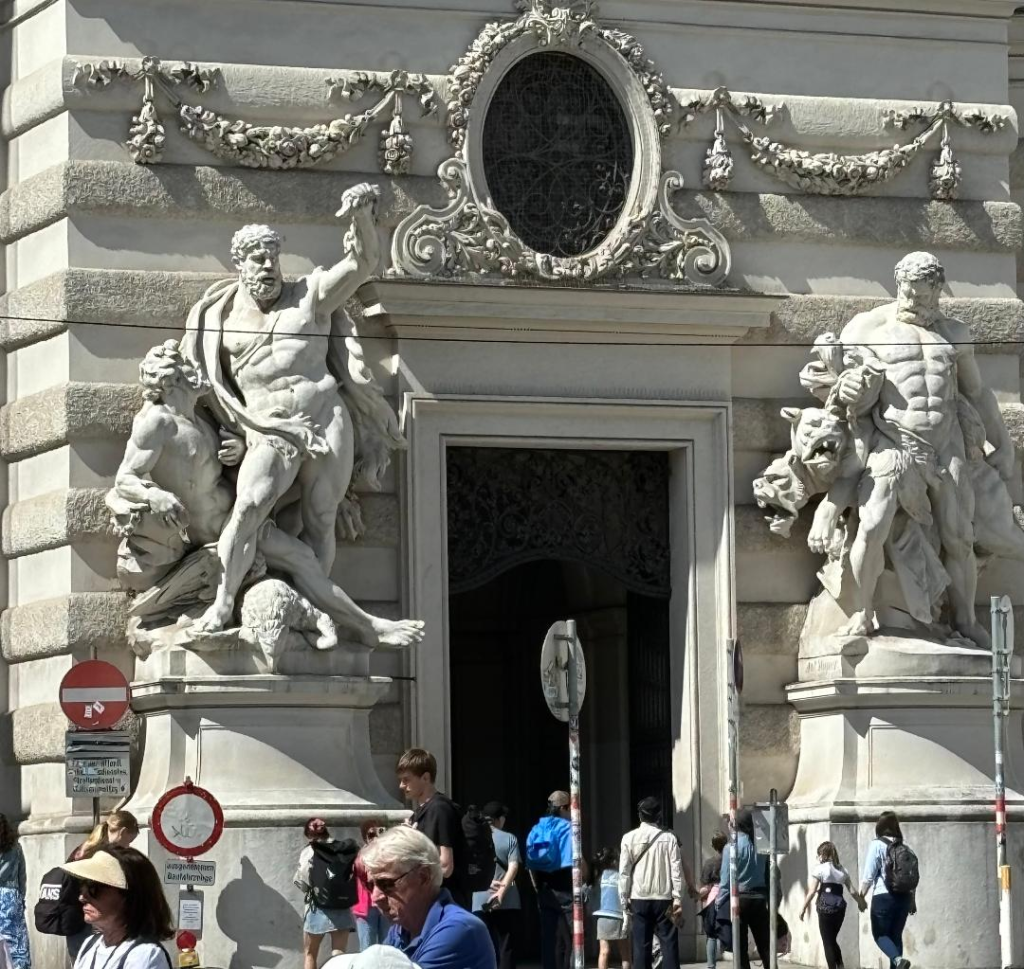
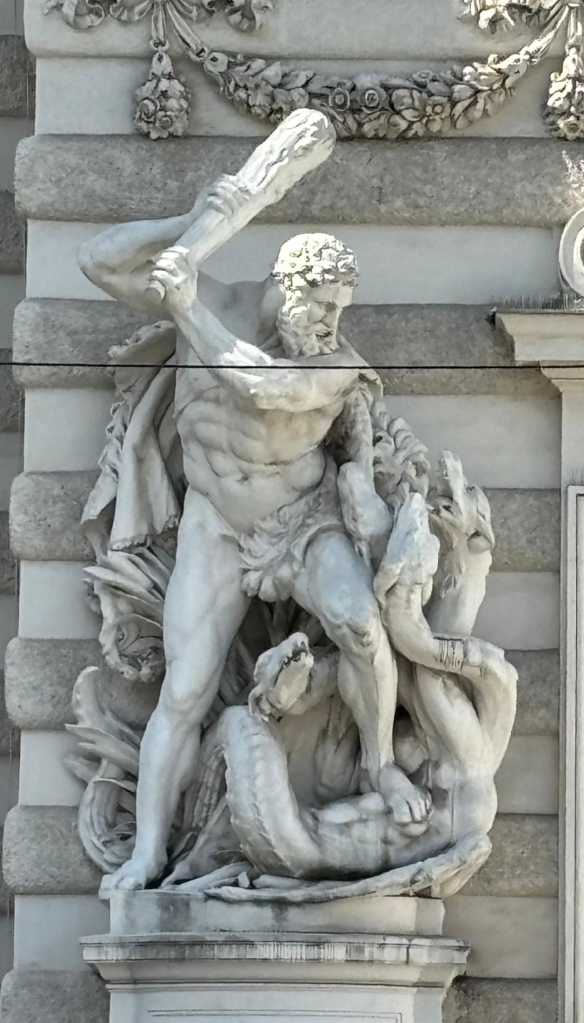

As we walked, our guide told us the story of how General Patton helped save the Lipizzaner horses during WWII. As the school tells it, Patton and the Austrian responsible for caring for the horses during the war, Col. Alois Podhajsky, had met during the Olympics, where they both competed in equestrian events. One of Patton’s units had captured the area where the horses were being kept during the war, and Podhajsky arranged a performance for Patton. He then asked Patton for help protecting the animals. Patton immediately agreed and Operation Cowboy was born. American GIs fought alongside German soldiers, Russian Cossacks, former British POWs, and Polish fighters to fend off SS attacks and drive the Lipizzaner herd to safety. Approximately 500 horses were saved, and the tradition of the Spanish Riding School of Vienna was preserved.
We began our tour in the outside stables. This was our one and only opportunity to take pictures of the horses themselves, and only one of the three that were being housed there was interested. We were not allowed to pet any of the horses or touch anything. The horses are kept in very isolated and well-guarded conditions, making them susceptible to illness or disease from outside germs.
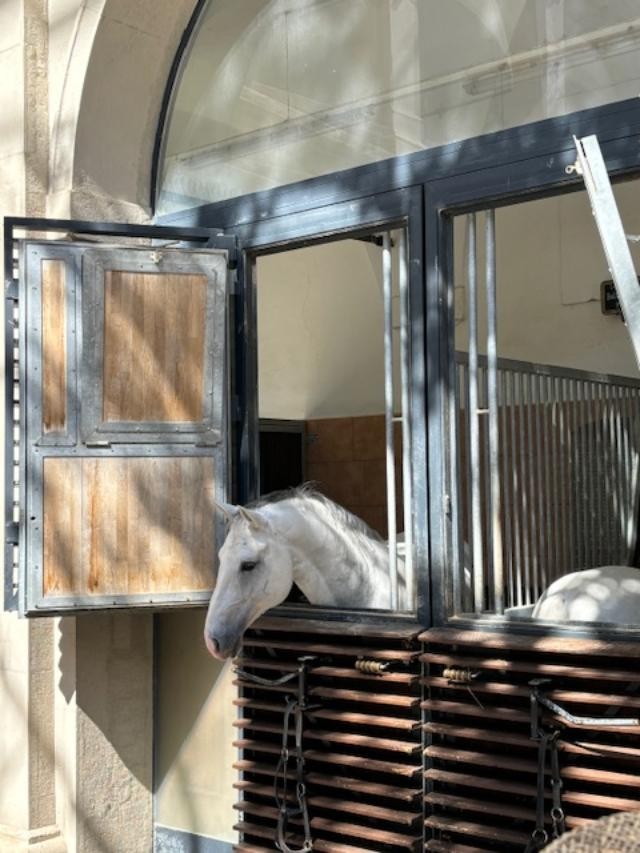
We visited the tack room, where all of the riders’ gear is stored. Each horse has two sets of tack; the black saddles are used for training and the white saddles are for performing. Each saddle is custom made and specifically fitted to the horse. They are re-fitted several times throughout the year to ensure the fit remains comfortable for the horse.
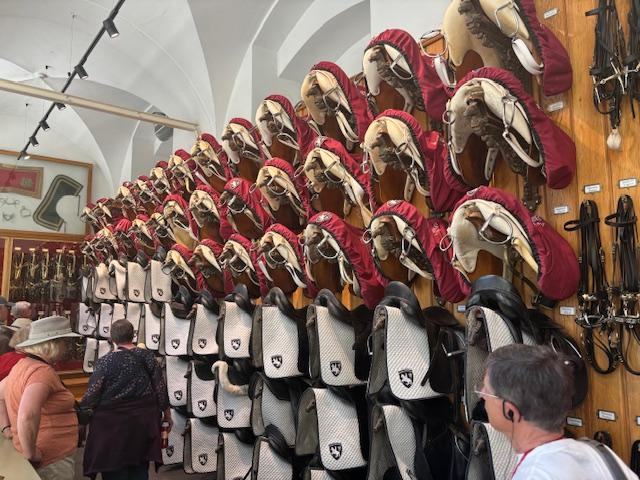
Only stallions are chosen for the school. This is because they have a more competitive personality. The school has room for 71 horses and usually has 65-68 at this location. They have another location in the western part of Austria. They use the current stable of stallions as studs for their mares. Each year about 40 foals are born; males and females are separated, and the males are taken into the mountains where they can develop strong muscles on the steep hills and enjoy the grasses and running space of large meadows.
When the foals are 3-4 years old, they will be considered for the school. The school will choose 5-6 horses and sell the rest. They are first taught how to pull a carriage and then move on from there. It takes 4-8 years to train a horse, depending on the learning style and abilities of the horse, so most are 10-11 years old by the time they actually begin performing. Horses will perform until they are 24 years old or so, but only as long as they seem to be enjoying it. Life expectancy for a Lipizzaner is 33-35, much longer than most other horses. Their oldest performing horse was 27 when he retired and lived to 49. They attribute the long life of the horses to how well they are treated and how much the horses enjoy their life.
As we said earlier, we didn’t get to see a show, but Ken captured these images from a movie we were shown.
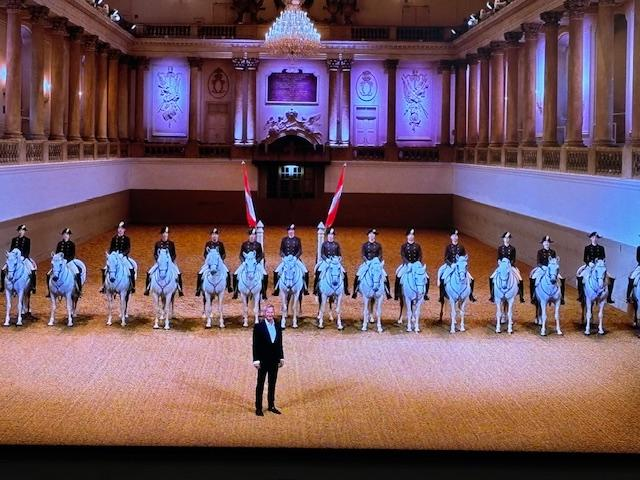


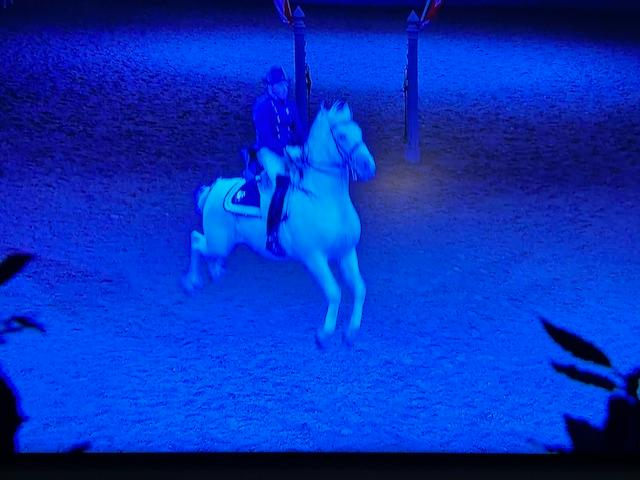
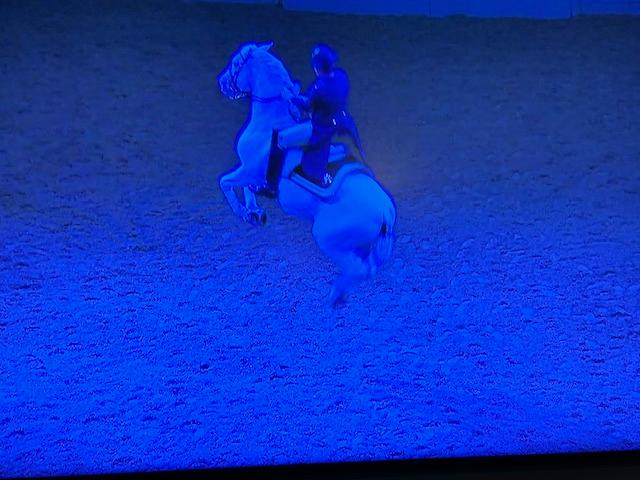
Jockies must be between 16 and 24 years old, no taller than 5’7″, and have at least some experience with dressage. About half the riders are women. There is no mandatory retirement age; most ride until they are at least 65.
Horses and riders are paired based on personality and remain together throughout the horse’s career. One rider may have as many as ten horses, but the horses will have only one rider.
Every horse is taken out for a walk for about an hour a day. They may use the walking stalls below, or walk through the Royal Gardens.
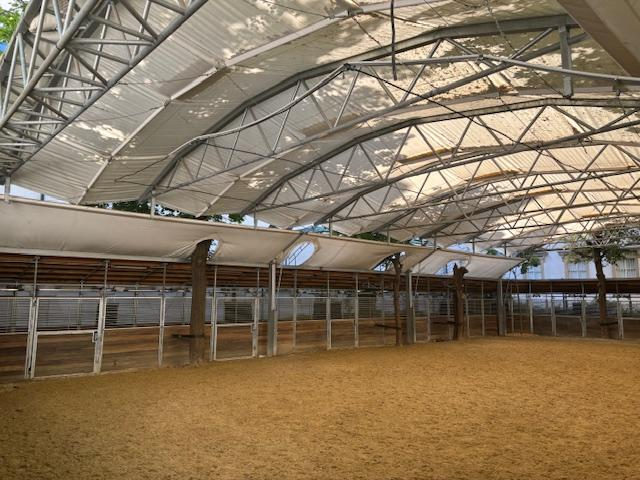

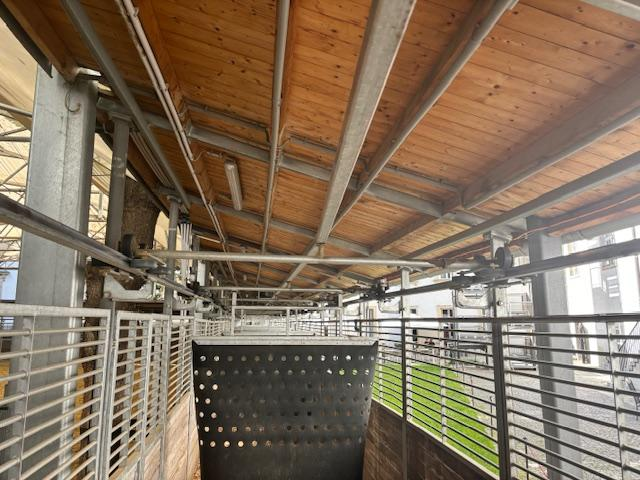
The arena is gorgeous. When it’s not being used for a performance, it may be used for balls, concerts, political events. The first assembly of Parliament was held here, Ferrari launched the Spider, and Arnold Schwarzenegger hosted a climate summit.
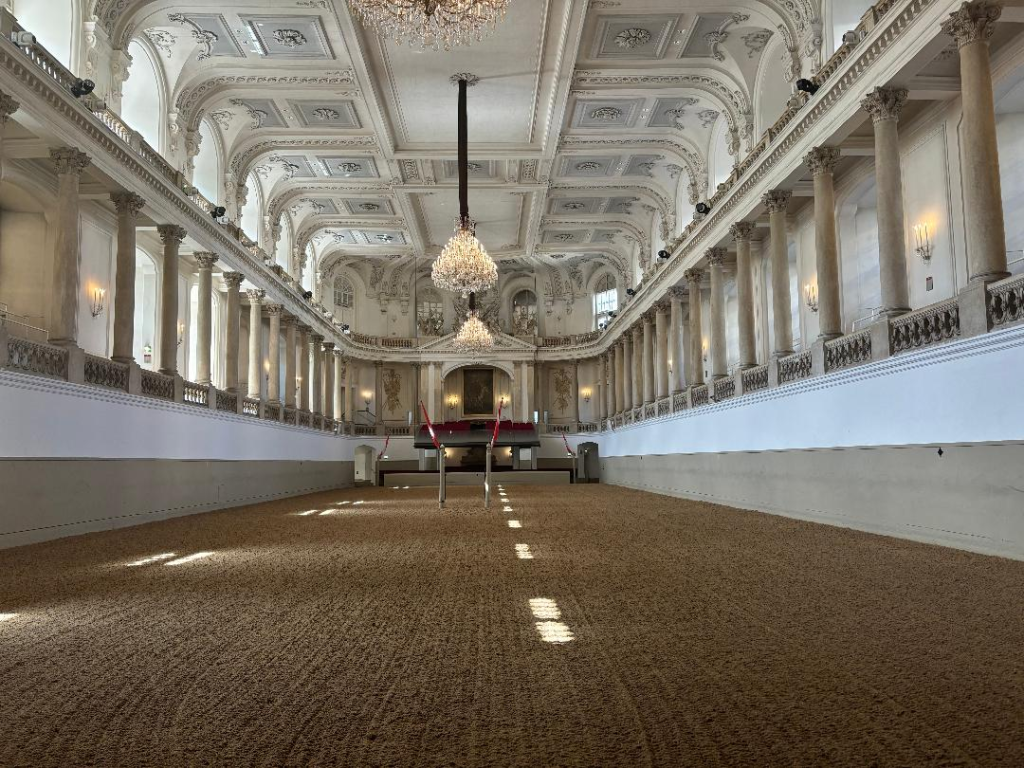
After our tour of the arena we were treated to a carriage ride which we thoroughly enjoyed.


Our return to the bus took us through the Vienna Rose Gardens. It was late afternoon and there were two men playing music as we entered, creating the perfect ambiance.
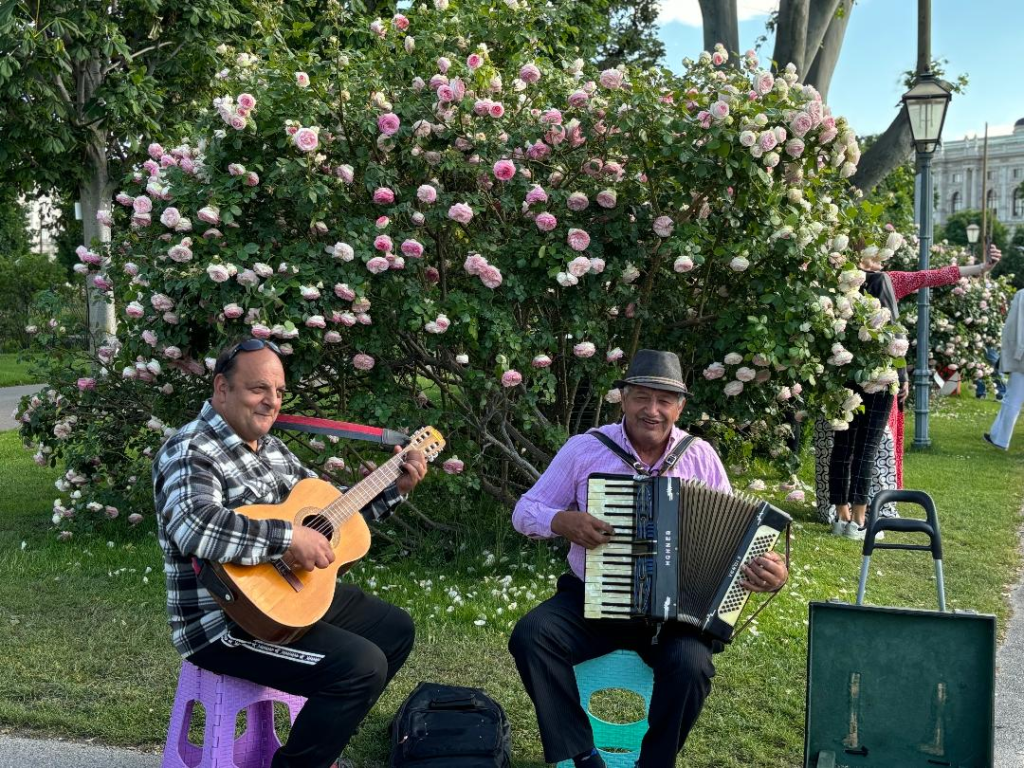
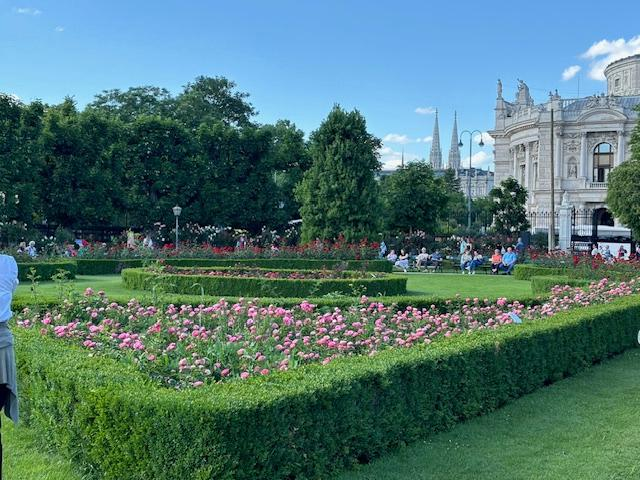
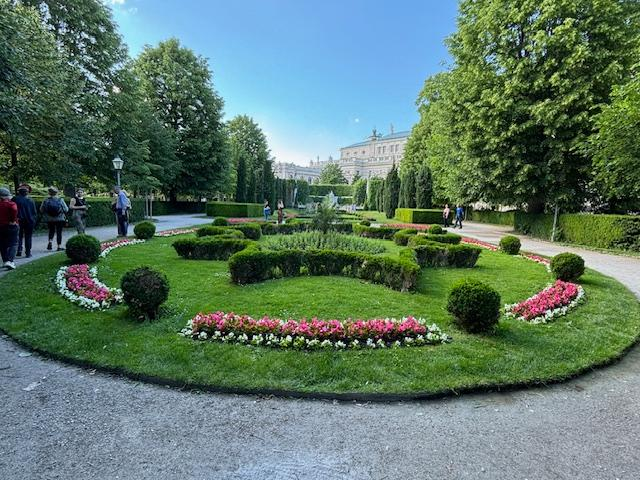
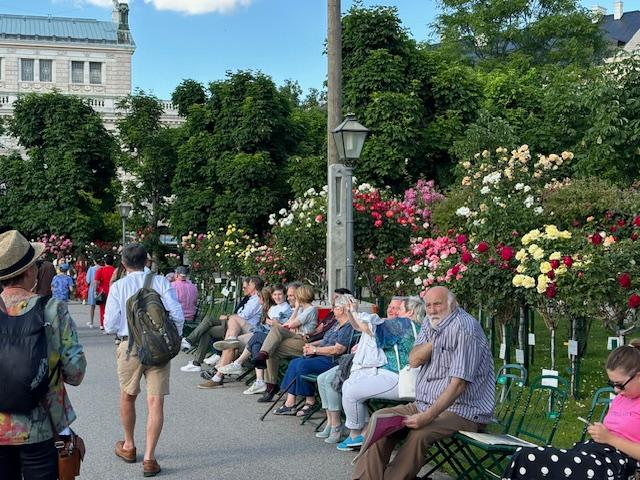
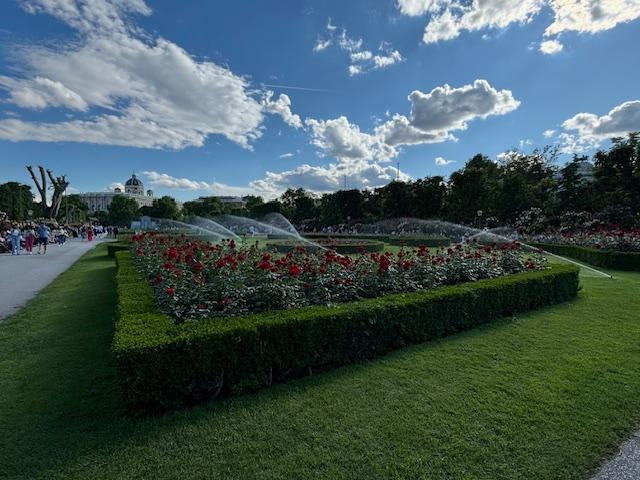
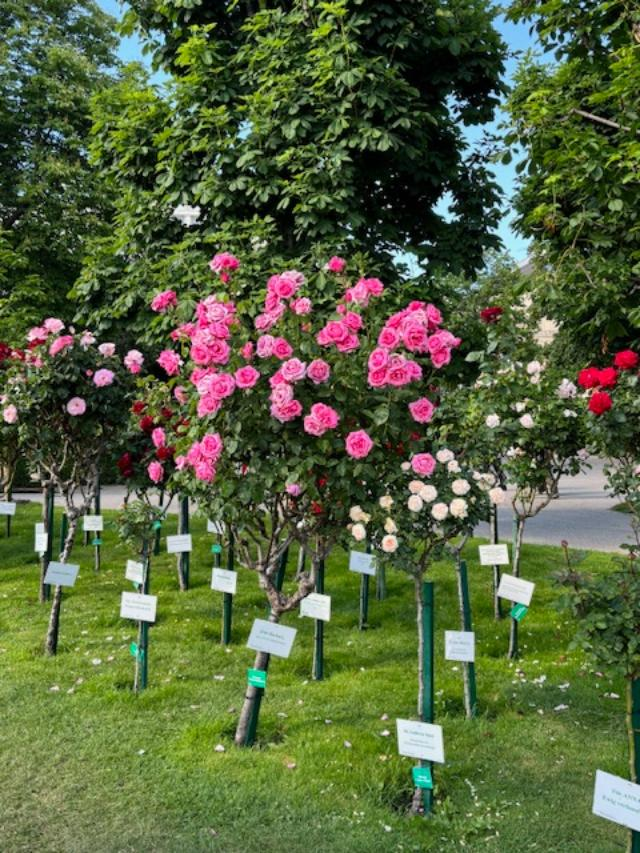
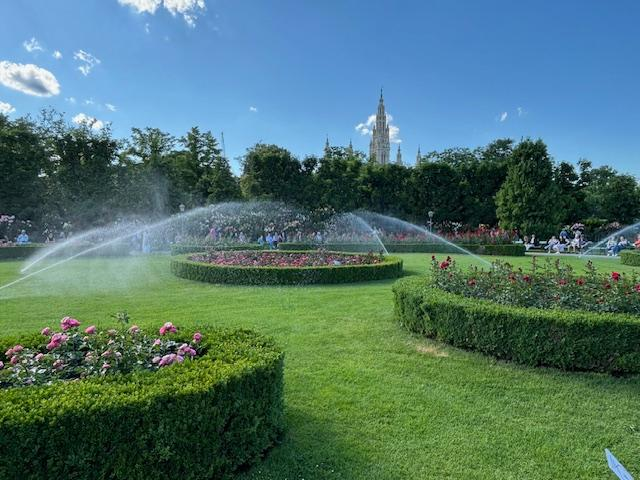
We had just enough time to change and grab dinner before heading out to a concert. What we thought was going to be a philharmonic-type concert in a large hall turned out to be a 5-piece string concert with performances by a male and female opera star and a ballet duo. We were not allowed to take pictures of the performers or the concert, but you can see what a beautiful venue it was. We do not usually listen to Beethoven and Mozart or attend the opera or ballet, but this was wonderful, and we thoroughly enjoyed it. It was a beautiful end to a beautiful day.


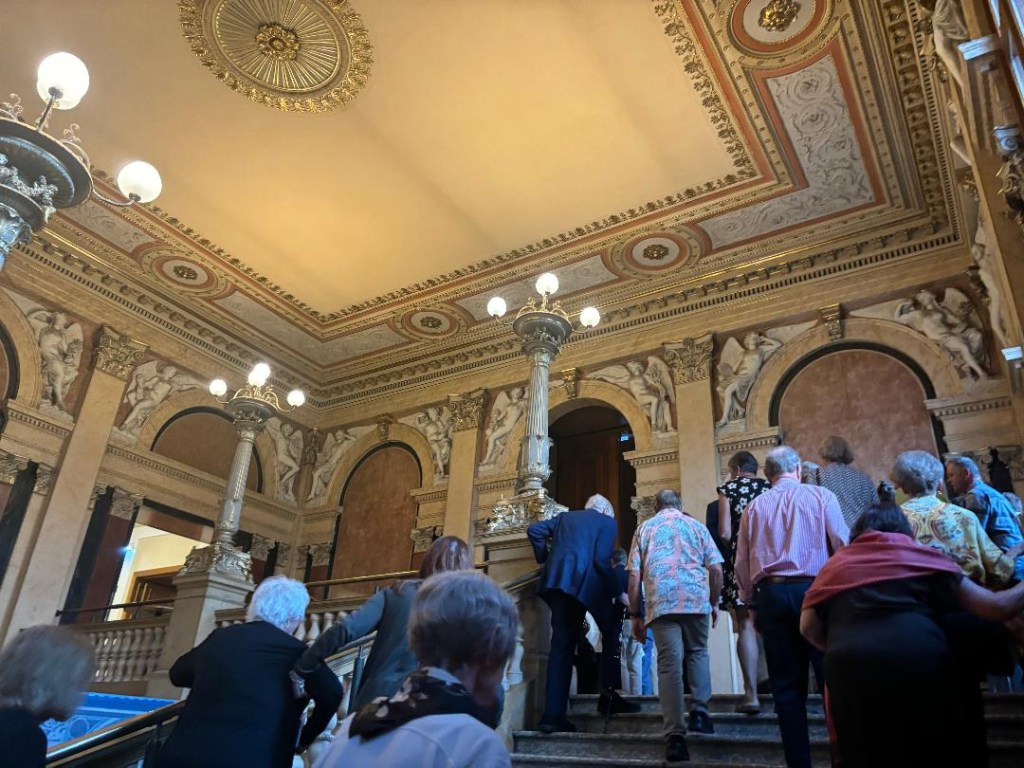
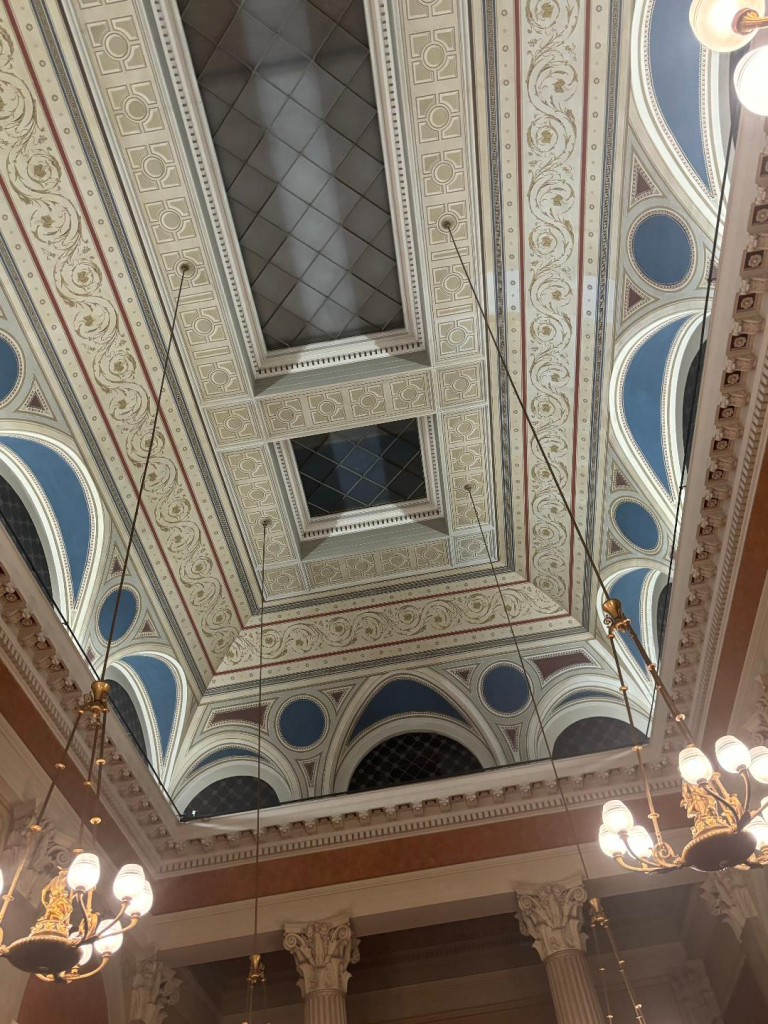



Wow! Love those horses and the gardens are beautiful!
LikeLike